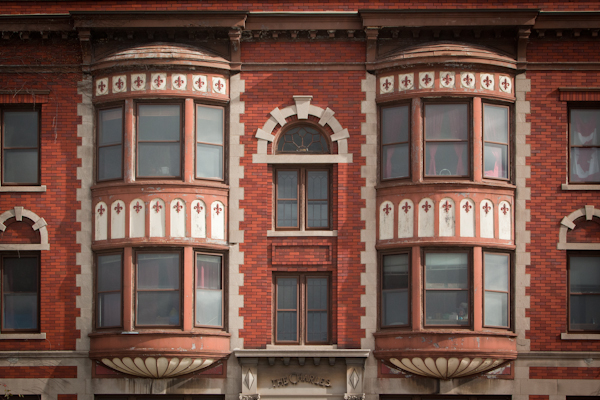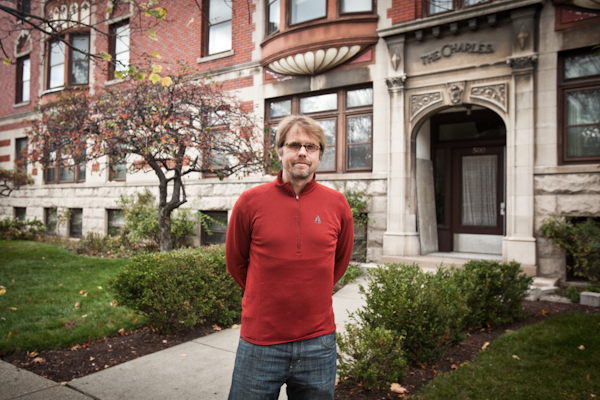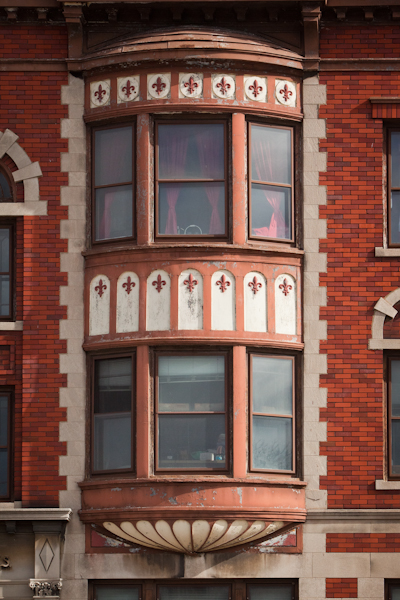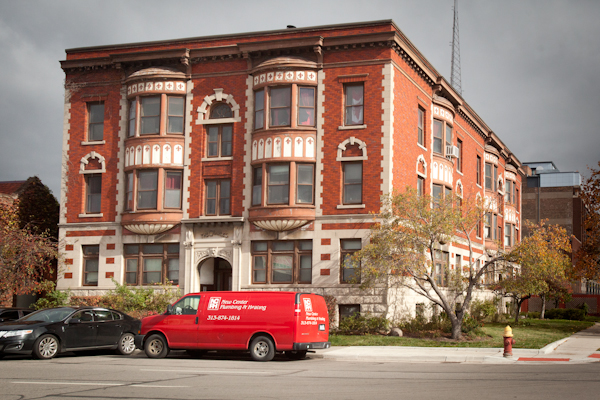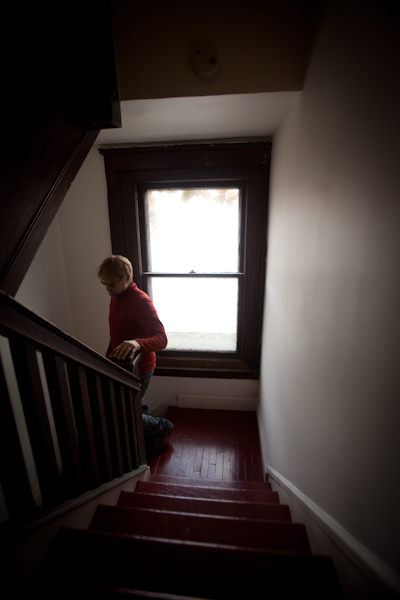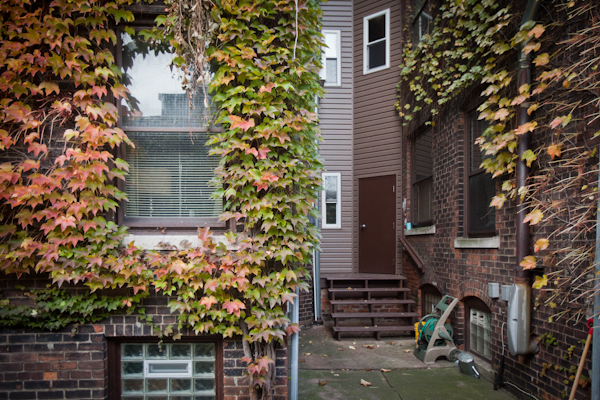Better Buildings: Preserving Midtown residential gem with green energy
Erik Nordin, who partnered with his brother on design work at the Madison Building and 24 Grille, has made a century old building his project made from passion. Amelia Kanan tells us how renewable resources play a part in the story of the Charles.
For 15 years Erik Nordin has managed the Charles, a twelve-unit condominium building in Midtown. This is also the place that he, his wife and two-year-old son call home.
On the corner of Willis and Second, just down the block from Avalon International Breads, sits the stately structure with a mix of stone and brick, bay windows and intricate carvings. The Jacobethan Revival structure was built in 1908 from a drafting board of Pollmar & Ropes, a small but successful architectural firm. During this era, the firm specialized in commercial and residential buildings which can be seen scattered throughout Detroit: East Jefferson’s Monticello Ballroom, Hubbard Farms’ Yorba Hotel and a home in the historic district of Palmer Woods.
It’s no coincidence that Nordin found such a gem and attached himself to it. He himself is a designer who co-owns Detroit Design Center with his brother Israel. They specialize in interior/exterior design, furniture, art installations and sculpture which can be seen all around the area, including places like the Madison building, 24 Grille in the Westin Book-Cadillac Hotel and Mosaic restaurant in Greektown. Dig into the Nordin brothers design work in this piece, Urbanism from Outer Space, Model D published in April.
Although his plate has been full with projects for his own company, Nordin has made the Charles a true priority. Since it’s been his passion project, he has stayed consistent with his commitment to making building improvements — for it’s residents, future buyers, neighbors, his family and himself.
When he first took the position as building manager, the first order of business was to haul out the basement filled with not only an enormous amount of decades old coal but dead rats, too. What was next on the list? Everything. There was painting, rehabbing, landscaping, appliance updating and all those little things that don’t seem so little once they’re on the to-do list. As the story goes with historic homes/buildings, the projects were endless.
Yet, rather than getting overwhelmed or too ambitious, Nordin paced himself by taking on certain projects one by one. Seasonally, logistically and financially minded Nordin began to restore the cloudy gem with which he had found. He turned the building’s back yard, from an overgrown, unprotected and nowhere-you-would-want-to-hang-out-space, into a secure oasis. A new roof was put on three years ago, facades were improved, designated storage space was added in the basement for each unit, and pipes replaced all the while, he was restoring his and his family’s own apartment.
These property improvements have not gone unnoticed. Other than the pleasing aesthetic value, the biggest sign of progress is that occupancy of the three-story condo building is full with a waiting list for vacancies.
The building and Nordin were ready to take on a bigger project and after some research he decided that it was time to tackle the 30-year-old windows. That is, the 218 drafty, caked with layers upon layers of paint and nails, oxidized windows. When first assessing the project he thought about restoring the windows. This would entail a 3-4 month project, requiring each window to be taken out individually and scrape the paint off in the middle of the residents’ homes.
“A lot of the windows in the building have 19 coats of paint on it. Have you ever stripped paint?” Nordin asks, with a smirk on his face. “It makes a huge mess.” Not only would the project turn the residents’ rehabbed units into stys of old nails, drop cloths and shards of paint but also with all those old layers of paint being released there is the issue of toxins. “You’re taking off paint that’s 7-plus years old and if you have small children it could be toxic,” Nordin says.
There are more issues, too. The old wood frames are falling apart and the glass panes are so oxidized that no amount of scrubbing could clear it. Even if Nordin and the residents decided to deal with the inconvenient consequences and the windows received a Cinderella revamp they would still be drafty and be hidden behind tasteless aluminum storm windows. It’s not just aesthetic and inconvenience that prompted Nordin to look into replacing the windows all together but there was also the component of energy efficiency.
Once Nordin decided that he didn’t want to put a band-aid on a wound that needed to be stitched and realized the amount of money that would entail, he looked into finding grant money to get the project done.
Luckily, in July, the Economic Development Corporation (EDC) approved nearly $650,000 in SmartBuildings Detroit energy conservation improvement grants. That made funds available for a larger amount of repair to windows in historic buildings. Scott Veldhuis of the Detroit Economic Growth Corporation (DEGC) and the staff of EDC has helped guide Nordin along the grant process, which has been a collaborative effort between organizations WARM Training, the DEGC, Zachary and Associates and the State Historic Preservation Office. Veldhuis says the “State Historic Preservation Office is now reviewing the proposal because the Charles is an older building and window decision is a larger consideration for a historic structure.”
Preservationists believe in maintaining the original design, structure and aesthetic of the building. This has been a priority to Nordin as well, for the past 15 years. “We want it to match the historical look of the building,” Nordin says as he stands in his restored unit with salvaged material. Naturally, since he is a designer, Nordin has reclaimed many of the installations himself but he has also used Reclaim Detroit. If it’s not original to the building, you can still find things original to the era.
Nordin has already found a local Detroit contractor who makes custom windows. The heavy solid pine windows (that are easy to clean) will save a ton on energy and provide ample insulation so the storm windows will be no more. The best part? It will only take two days to replace all 218 windows. No mess. No inconvenience. And no room for inconsistency.
Amelia Kanan is a freelance writer, photographer and videographer.
Photos by Marvin Shaouni
